The Allure and Perils of Hydropower
On an early spring evening in southwestern Albania, Taulant Hazizaj walks between silver-gray olive trees near the Vjosa River. Farms sprawl over the wide river valley, swatches of irrigated green giving way to the rocky swell of surrounding hills. He points to an ancient tree, whose gnarled trunk is wider than a man’s outstretched arms. “This village has been here for 2,000 years,” Hazizaj says of his hometown, Kuta, tucked above the water’s edge. But in 2016, the Albanian government sold a concession to build a dam a few miles downstream, and now this olive grove, and much of the valley — including the village itself — may soon be underwater.
“If the dam is built, all of that will be gone,” Hazizaj says.
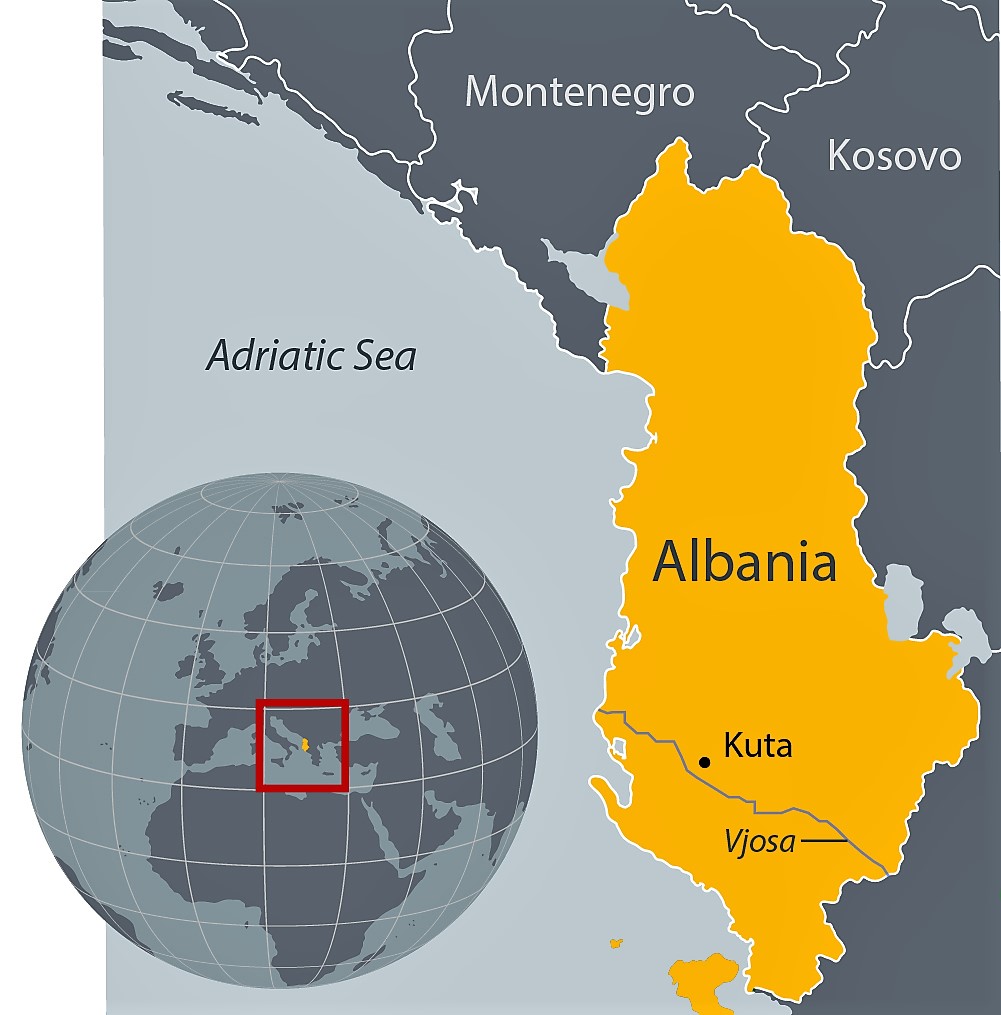
The Vjosa River is widely regarded as Europe’s last wild river.
Visual: Undark
Winding his way back to the town center, he passes a cemetery where centuries-old tombstones lean into the evening breeze. If the dam is built, the graves will have to be relocated. “My dad said, ‘One olive tree is like a son.’” Hazizaj recollects. He looks back over his shoulder at the river.
Widely regarded as Europe’s last wild river, the Vjosa is fed by dozens of mountain tributaries, running 169 miles from the Pindus mountains of northern Greece to the Adriatic Sea. So far, it remains undammed, but a total of 31 dams are projected to be built along the river and its tributaries in coming years. That has both developers and environmentalists squaring off over whether the true value of this special place is best realized by exploiting it for kilowatts, or conserving it for its biodiversity and the nourishment it provides communities up and down its shores.
It’s not an easy question to answer — here or anywhere. The proposed dam in Kuta is just one example of a growing enthusiasm, particularly in lower-income countries, for hydroelectric power and its promise of cheap, clean, and copious energy. Around the Balkans alone, roughly 2,700 new hydropower projects of varying sizes are currently in the works — more than all the active hydropower plants in the United States. And that is dwarfed by the number of planned dams in Asia, Africa, and South America.
This stands in stark contrast to the trend in more developed regions like the United States and Western Europe, where new science is driving efforts to dismantle existing dams. Aging reservoirs have become inefficient, local ecosystem and habitat impacts can be profound, and accumulating research suggests that hydropower reservoirs may be a much larger contributor of methane — a greenhouse gas roughly 30 times more potent than carbon dioxide — than previously realized. In a recent study published in the journal BioScience, researchers found that reservoirs may produce as much as a billion tons of carbon dioxide equivalents — the majority of emissions coming in the form of methane — each year, more than the total emissions from the country of Canada.
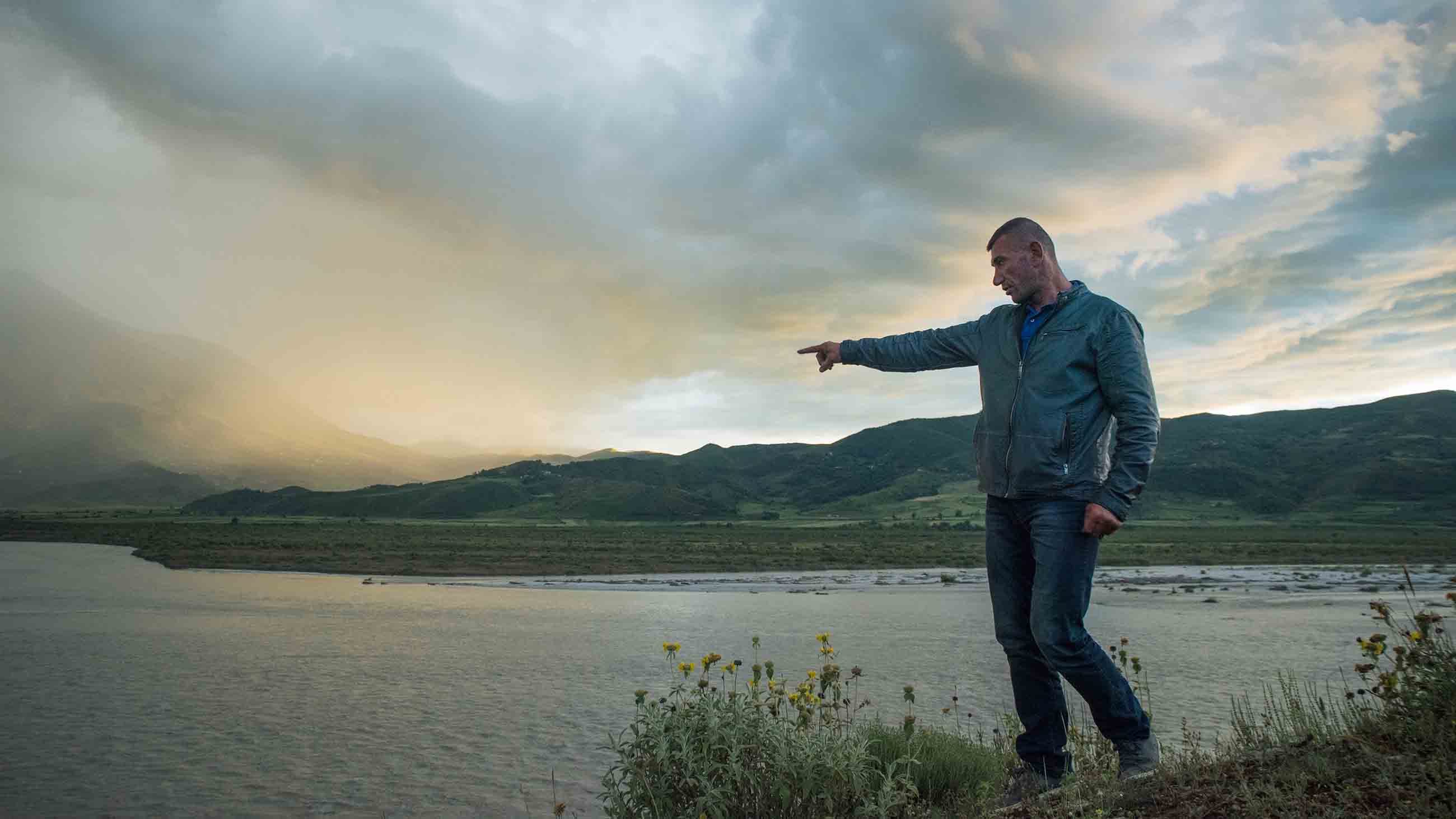
Other analyses have suggested that even next-generation hydropower technologies are problematic — and in the developing world in particular, dam projects are often beset by questionable economics, local corruption, and uncertain long-term benefits.
The competing costs and benefits present a particular conundrum for low and middle-income countries, whose continued development depends on energy. Hydropower’s social and environmental impacts may be problematic, but the local and atmospheric pollution generated by a typical hydropower plant is still dwarfed by a comparably-sized coal plant — which, along with oil, is Albania’s other primary energy source. In addition, some of the world’s most electricity-impoverished countries also have some of the least-exploited hydropower potential, leaving them to consider, with few clear answers, how best to exploit their resources while addressing a vast array of social and environmental risks.
For governments and investors now eyeing the Vjosa — and for the communities whose homes and lives would be forever changed by the looming dam projects — it’s not an academic question. Throughout much of the 20th century, Albania was isolated under its former Communist ruler, Enver Hoxha, so much of the river has remained unexplored by scientists, and little is known about its ecosystems. Last May, a comprehensive survey identified a surprising diversity of plant and animal life — species that have long since disappeared in other European waters, and that are now at risk should plans to dam the river move forward.
“When you build a dam, you destroy the single most important thing about a river: the flow,” says Rok Rozman, a Slovenian biologist and kayaker who has become a fierce defender of the Vjosa. “You kill the whole ecosystem.”
As the first mega-dam, the Hoover Dam, completed in 1935, marked a turning point in the efficiency and ambition of hydropower projects. Dean Pulsipher, then a teenage laborer, remembers his first view of the site of the future Hoover Dam. “There was just a cow trail going down” to the Colorado River, he told historian Dennis McBride. Pulsipher couldn’t fathom how a dam could be built there. “That canyon was full of water — there were no sandbars down there. I thought that’s an impossible task, that they’ll ever accomplish that,” he said.
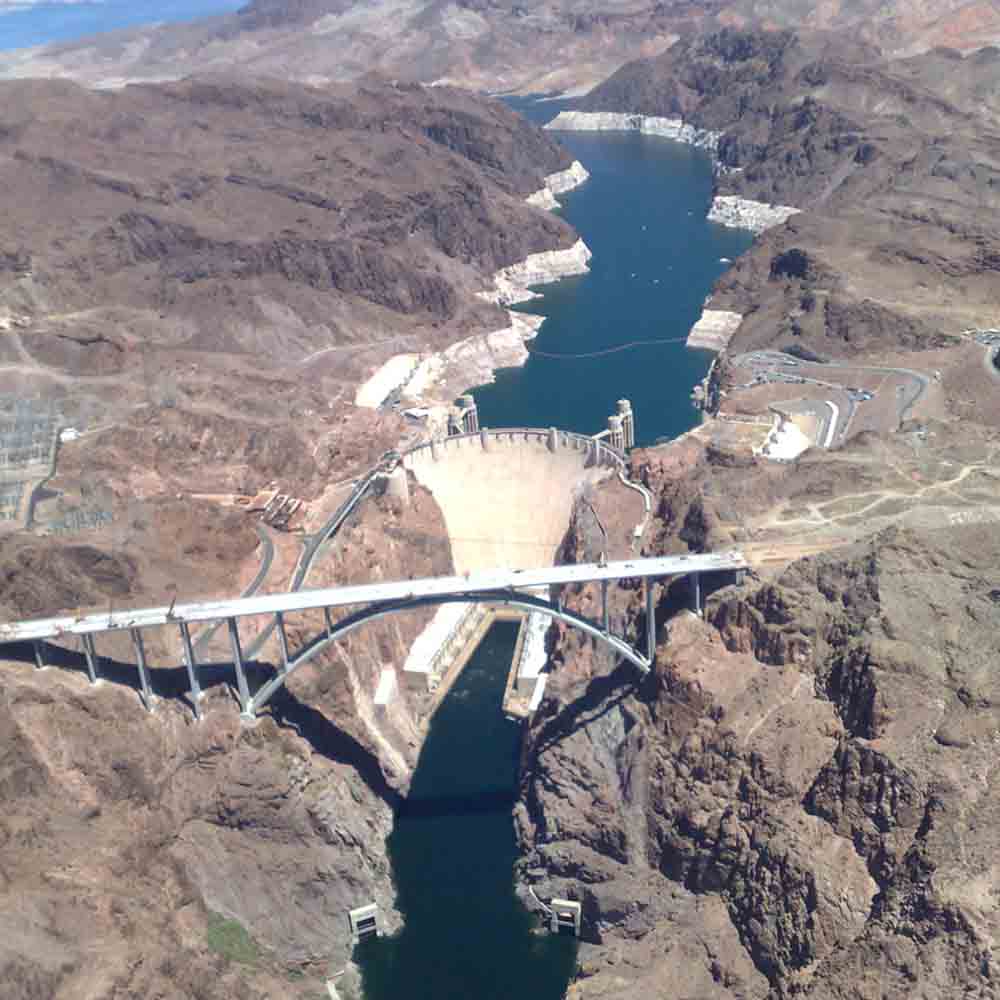
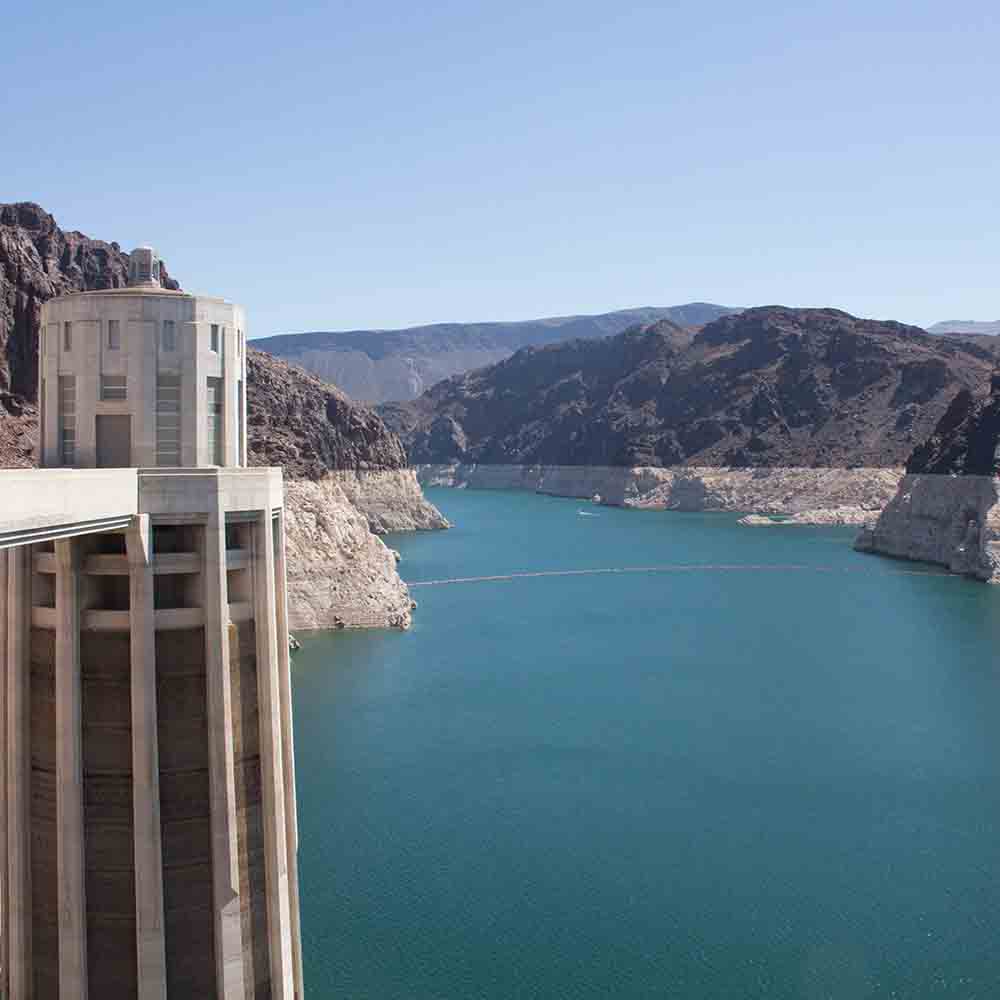
First, tunnels had to be dug to divert the water. Workers climbed the canyon walls carrying heavy jackhammers to shave off loose rock. Of the tens of thousands of men who worked on the site, dozens died from rock slides, others of heat exhaustion. Over 6.5 million tons of concrete were mixed, some on the dry riverbed itself. Today, the massive arch dam rises 60 stories and generates 4.5 billion kilowatt-hours of power annually, enough to serve about 1.3 million people. Controlling the wild Colorado River fueled the development of Los Angeles, Las Vegas, and Phoenix. It also created Lake Mead, the United States’ largest reservoir, with a maximum capacity of nearly 30 million acre-feet.
The merits of that depend on your perspective — “killing the river,” is how Gary Wockner, director of two river and water protection organizations in Colorado, describes it. But today, dams in Asia and South America are far more massive than the Hoover, and hydropower accounts for 16 percent of all of the world’s electricity — as well as some of the most readily accessible untapped energy available.
As climate change puts increasing pressure on reducing emissions, governments have started paying more attention to how their electricity is produced. At the same time, demand for cheap power in the developing world is rapidly rising. According to a 2015 report from McKinsey, an international consulting company, “There is a direct correlation between economic growth and electricity supply.”
But the hurdles are daunting for many impoverished countries, and they tend to reinforce inequality. Take for example, the region with the world’s worst access to electricity, sub-Saharan Africa. According to the McKinsey report, “It has 13 percent of the world’s population, but 48 percent of the share of the global population without access to electricity.” That’s 600 million people without power. South Asia shares similar statistics. “Electricity consumption and economic development are closely linked; growth will not happen without a step change in the power sector,” the report states.
Realistically, it’s hard to imagine that demand being met with just wind or solar, which confront major infrastructure hurdles. Although the price of both technologies is dropping, they’ve historically been comparatively expensive, a reputation which can make it hard to find funding for largescale projects. The distributed energy generation also requires expensive transmission line construction. Since power grid infrastructure is usually not designed to cope with the variability in supply that comes with wind or solar, countries must also pay to maintain traditional power plants to cover the gaps in production.
Hydroelectricity, on the other hand, isn’t subject to market fluctuations, like oil or coal, and doesn’t have the same issues with intermittency or storage (but is highly impacted by drought and changing weather patterns). Used in conjunction with wind and solar, it can help smooth variable production. It’s among the cheapest forms of energy, and there’s a lot of it; less than 10 percent of possible hydropower potential in sub-Saharan Africa has been developed, leaving a potential 400 gigawatts — enough to quadruple the amount of power Africa currently generates. Bill Gates is among the humanitarians who think that for all these reasons, wind and solar aren’t sufficient energy sources for developing countries.
“The key would be to be agnostic, to not be ideological about it,” says William Rex, the lead water resources specialist at the World Bank. In his work with the World Bank’s flagship hydropower projects, he says, “obviously each country or basin power grid is different based on where they’re starting.” Consideration of hydropower projects “boils down to thinking about the broader range of services society needs,” Rex says. “It may be urban water supply, or flood management, or food security via irrigation.”
Dams often provide not only electricity, but crucial water storage and irrigation. “Dams aren’t the only way to store water, but they’re usually part of that puzzle,” Rex says. As climate change makes fresh water less reliable, both irrigation and flood management will become increasingly important. Already, floods and drought cost the world’s poorest countries as much as 10 percent of GDP per year.
In the 1990s, the World Bank and other large investment organizations backed away from hydropower projects because of their overwhelming environmental and social impacts. But about 15 years ago, the Bank concluded that tapping Africa and Asia’s undeveloped hydropower potential was necessary to reduce poverty while curbing carbon emissions. “We have to be fair in balancing the needs of poor countries … with this other bigger goal of tackling climate change,” Jim Yong Kim, the Bank’s president, told The Guardian in 2013.
The Rusumo Falls Hydroelectric Project is just one of many dam projects around the world supported by the World Bank. The project aims to increase power supplies to the national grids of Burundi, Rwanda, and Tanzania.
Together with the World Conservation Union, the Bank established the World Commission on Dams, updating guidelines for projects to try to reduce the harmful impacts. More recently, the Nature Conservancy has developed Hydropower by Design, an approach that uses data and computer modeling to maximize electricity from projects, trying to generate power while keeping as many rivers free-flowing as possible. “We’re thinking in a systematic way about hydro and how to balance the environmental and economic sides better,” Rex says. “We are very much in favor of thinking bigger picture about hydro.”
As investors express new interest, the technology is also improving. The U.S. Army Corps of Engineers is developing new, more efficient turbines. In 2016, they installed two new designs on the Ice Harbor Lock and Dam in Washington, which are safer for fish and are predicted to increase power generation by up to 4 percent compared to the existing dam. Engineers are also exploring new applications of hydropower, both within existing infrastructure, like in sewer pipes under the streets of Portland, Oregon, and in entirely new areas.
“The kinetic energy in ocean waves and water currents in tidal estuaries and rivers is being looked at for new types of water power projects,” according to a 2011 Water Resources Outlook report produced by the Army Corps. “Significant opportunities exist for developing new, more efficient technologies in hydropower, especially in areas that involve increases in both energy and environmental performance, which are critical to new development.”
On a blue-sky day on the Vjosa River, a kayak glides by a dam construction site at Kalivac, a small town in a wild Albanian valley filled with hidden mom-and-pop marijuana fields. Rozman, the biologist who began to advocate for rivers after an Olympic rowing career, previously tried to stop at the dam site, where construction has been halted several times, but was turned away by villagers protecting their marijuana.
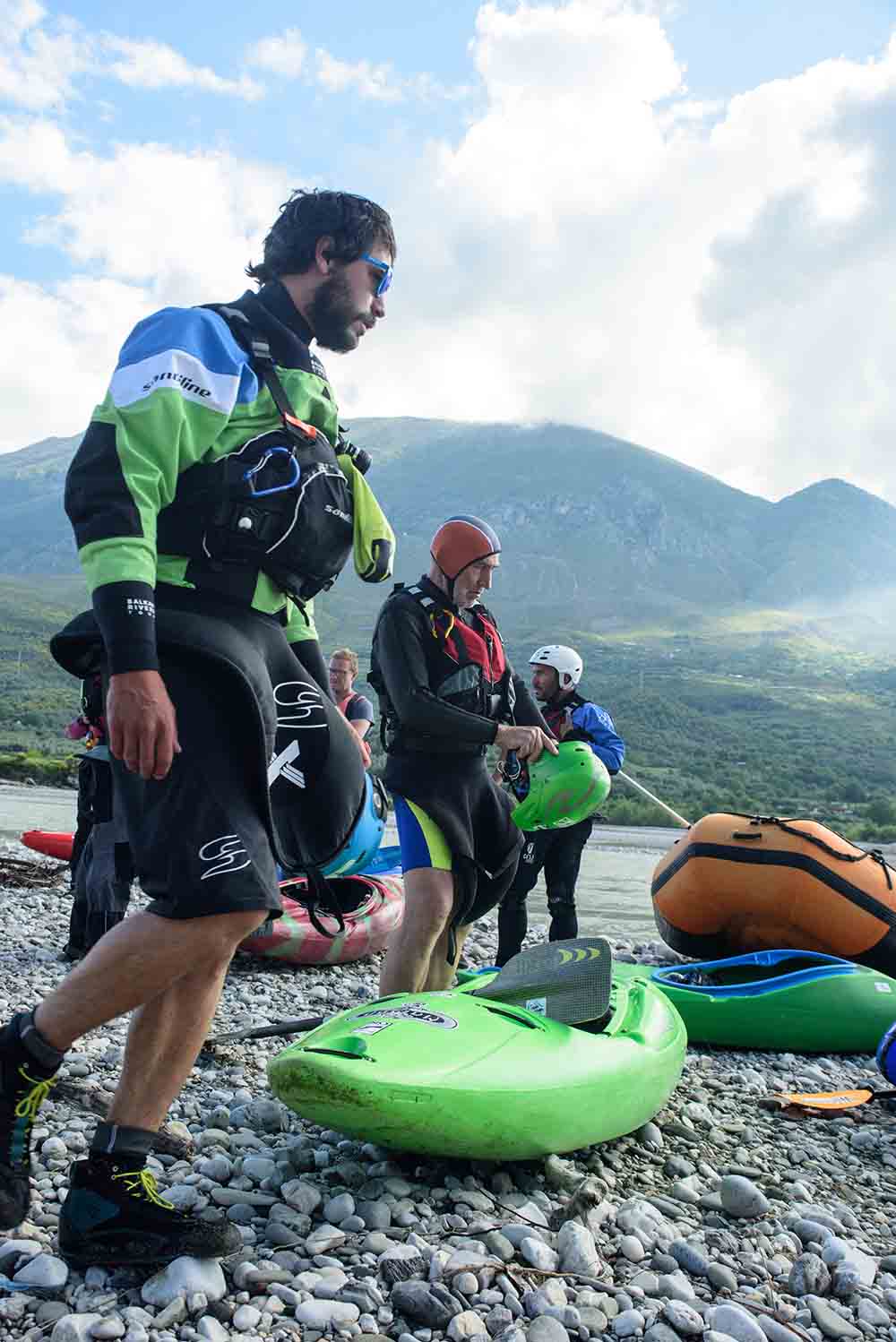
Rok Rozman, left, is a biologist and river activist in Albania. “It’s not just about snails and fish,” Rozman says of planned dams on the Vjosa. “It’s about people, because we depend on the rivers.”
Visual: Sean McDermott for Undark
The partially-constructed project, a joint venture between Deutsche Bank, other international financial backers, and Francesco Becchetti, a notorious Italian businessman, has stalled since Becchetti’s arrest for fraud and money laundering. A previous Albanian prime minister granted the concession in 1997 as one of many dams greenlighted for political reasons; Zamir Dedej, general director of the National Agency of Protected Areas, says that hydropower concessions peaked during election periods. Though the current government, behind closed doors, claims it would prefer to find ways to back out of many of these concessions, “the deal is done,” Dedej says.
“It’s not just about snails and fish,” Rozman says of the projects. “It’s about people, because we depend on the rivers.” Organic materials build up behind dams, consuming oxygen as they decompose. This sedimentation can create oxygen-free dead zones, where no river life of any kind can survive. As water stops flowing, its temperature rises. Even a few degrees can be life-threatening, since most aquatic life is highly temperature-sensitive. Sedimentation also gradually lowers the storage capability of the reservoir, reducing the amount of electricity generated.
The area downstream of a dam is obviously impacted by reduced water flow — the Colorado River, for example, no longer reliably reaches the ocean — but also by the lack of stones, logs, and sediment. “Downstream of a dam, the river is starved of its structural materials and cannot provide habitat,” according to the Hydropower Reform Coalition, a collection of 150 environmental groups. “Most dams don’t simply draw a line in the water; they eliminate habitat in their reservoirs and in the river below.” On the Vjosa, this habitat loss could harm 40 species who live along its shores, in addition to two new species that were discovered in September in the proposed dam area.
Unsurprisingly, the rivers with the fewest number of dams have the best water quality and the highest biodiversity, compared to rivers within the same region. Most planned dams are in the developing world, mainly in tropical or subtropical locations, where the number of species at risk is especially high. “Fragmentation due to dams is a significant factor in biodiversity loss,” according to International Rivers, a nonprofit environmental group based in California. Since 1970, in parallel with a dam construction boom over the last few decades, the world has lost 80 percent of its freshwater wildlife.
This loss in turn affects the people who live nearby. A 2017 report by the Internal Displacement Monitoring Center found that dams were responsible for displacing 80 million people. “Rivers provide immense value to communities who live in and around the river,” says Kate Horner, executive director of International Rivers. “The Mekong is one of the greatest examples. Literally millions are reliant on freshwater fisheries who will be left hungry when those fishery stocks are depleted, when they don’t have habitat and spawning environments.”
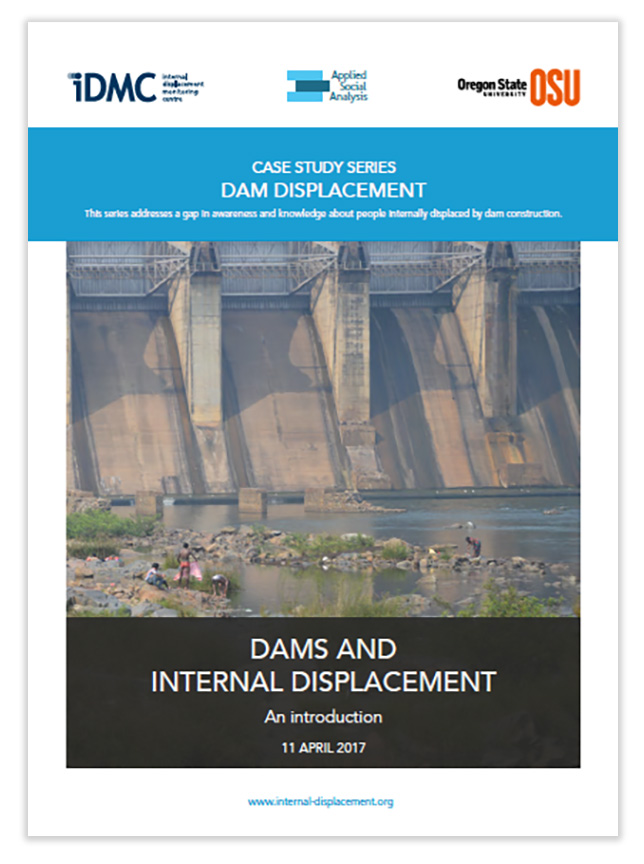
A 2017 report by the Internal Displacement Monitoring Center found that dams were responsible for displacing 80 million people.
But hydropower’s most devastating effect might be that, contrary to popular belief, it’s not actually emission-free. “There’s been a lot of discussion about greenhouse gas emission from reservoirs from submerged vegetation,” Horner says.
As trapped material decays in reservoirs, methane bubbles are released; tropical locations tend to have more vegetation, and therefore higher methane emissions. These bubbles occur in natural reservoirs as well, but their rate increases when water passes through turbines.
As far back as 2000, research suggested that hydropower was a net producer of greenhouse gas, but the data was contested by powerful hydropower lobbies. (Because they happen sporadically, methane bubbles are difficult to study, and need to be tracked by sonar.) Today, the abundance of evidence is hard to deny. In 2016, researchers at Washington State University conducted a comprehensive meta-analysis, looking at 100 studies of emissions from over 250 reservoirs, and found that each square meter of reservoir surface emitted 25 percent more methane than previously recognized.
In some cases, greenhouse gas emissions from hydropower are actually higher than a comparable fossil fuel power plant. Philip Fearnside, an ecologist, found that just 13 years after it was built, the Curuá-Una Dam in Amazonian Brazil emitted 3.6 times more greenhouse gases than generating the same amount of electricity from oil.
Slowly, new research is changing the way hydropower is treated under the Intergovernmental Panel on Climate Change. While the panel makes clear that dams produce far less emissions than coal-generated electricity, it has nonetheless included emissions from artificially flooded regions in each country’s carbon budget since 2006. Fearnside and others think the IPCC guidelines don’t go far enough, as they’re non-binding, and the methodology only considers the first 10 years of a dam’s operation and only measures surface emissions.
But whatever the contribution of dams to global warming, rising temperatures alone are making the water cycles on which dams depend more chaotic, and this, too, is changing the calculus for hydropower. A study published in the journal Energy in 2016 suggests that under one model, variability in rainfall due to climate change will decrease the average annual hydropower output in California by 3.1 percent. That of course, is only an average in one region; a study published in Nature Climate Change suggests that 86 percent of hydro facilities could see notable cuts in their generation.
This would have a rippling effect on industries, which are the most persuasive lobbyists for hydropower. Already in Zambia, where 95 percent of electricity comes from dams, droughts in 2015 led to intense power shortages, crippling the country’s copper mines, an essential part of the economy.
“Hydropower is not a climate resilient source of energy,” Horner says.
Rozman recently took a group of kayakers out on the Moraca River in Montenegro. “The river is out of this world,” Rozman says. On a trip this spring, he adds, “I drank the water in the capital city — before the sewage comes in — and it’s no problem, it’s so clean.”
Douglas Herrick and Alice Golenko, a consultant and junior policy analyst, respectively, at the Organization for Economic Co-operation and Development, were among those joining him on the Moraca. “You can see how the water cuts itself into the karst formations,” Herrick says. He describes it as being “so clear, it’s like glass.”
The Montenegrin government is planning a four-cascade dam on the river, and Herrick had just been to meetings to discuss the project. “I took them rafting and they were shocked,” Rozman says. “They’d had talks with politicians, thought everything was O.K. But then they saw.”
Golenko, speaking of her own impression and not for OECD policy, acknowledges that “I wasn’t aware of its primary benefits and challenges.”
Rozman hopes that by showing people what’s at stake with damming, they will become more motivated to protect rivers. “If at the end of the day, we still need to build hydro, let’s build a big one, where it makes the least damage to people and the environment, instead of 400 small ones that just spread the destruction.”
But even reducing the number of dams may not be a solution. In hydropower, size matters; it’s just not always clear how. Large dams — those taller than a four-story building — have significant environmental impacts. Globally, there are more than 57,000 large dams, and at least 300 major dams, projects over 490 feet tall. These dams can take decades to build, cost billions of dollars, and on average, end up exceeding projected costs by 90 percent.
Itaipu Dam, for example, built between Brazil and Paraguay in the 1980s, cost $20 billion, took 18 years to build, and generates 20 percent less electricity than was predicted. “Large dams, in a vast majority of cases, are not economically viable,” according to a 2014 report from Oxford that analyzed 245 large dams in 65 different countries. “Instead of obtaining hoped-for riches, emerging economies risk drowning their fragile economies in debt owing to ill-advised construction of large dams.”
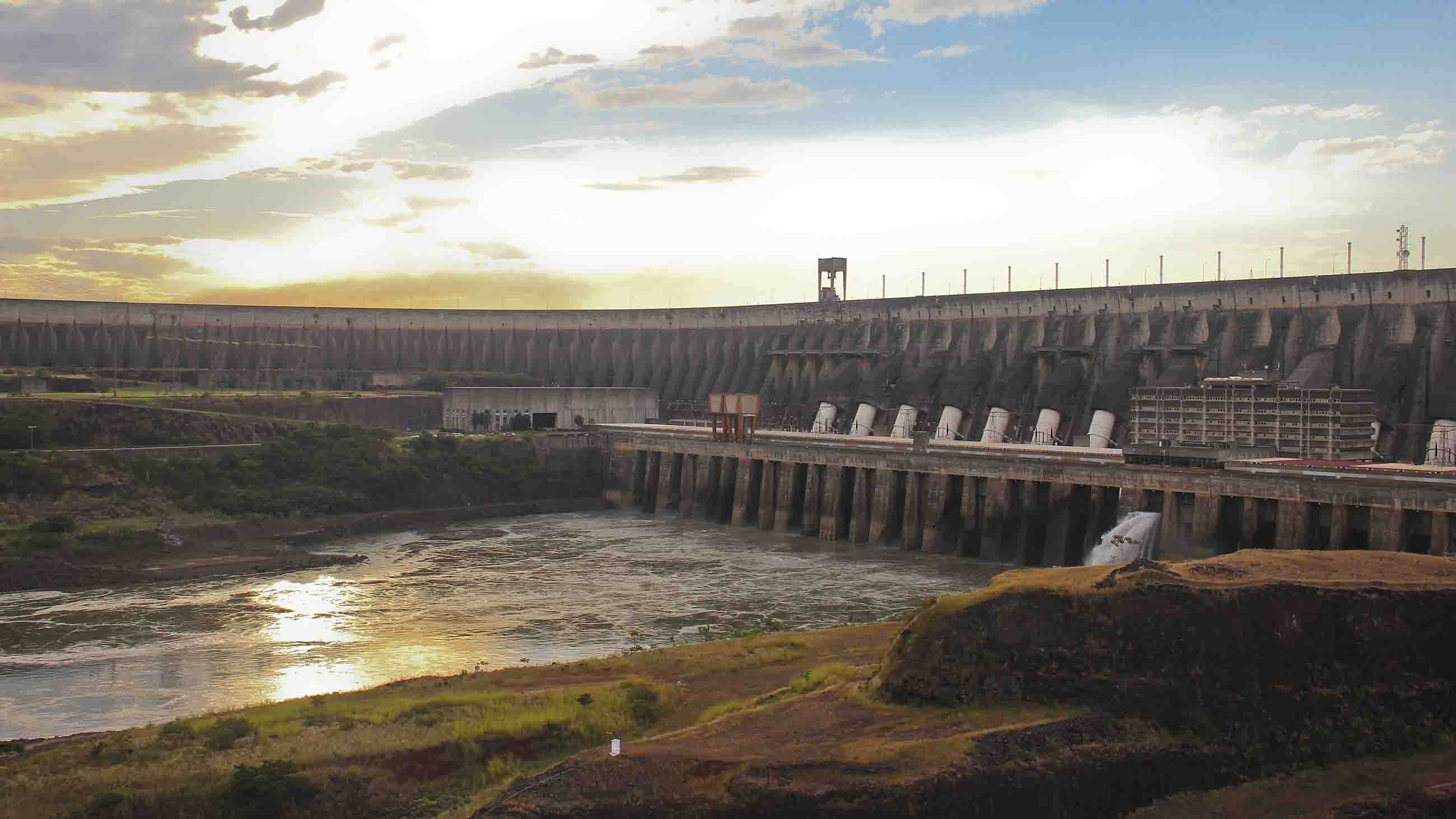
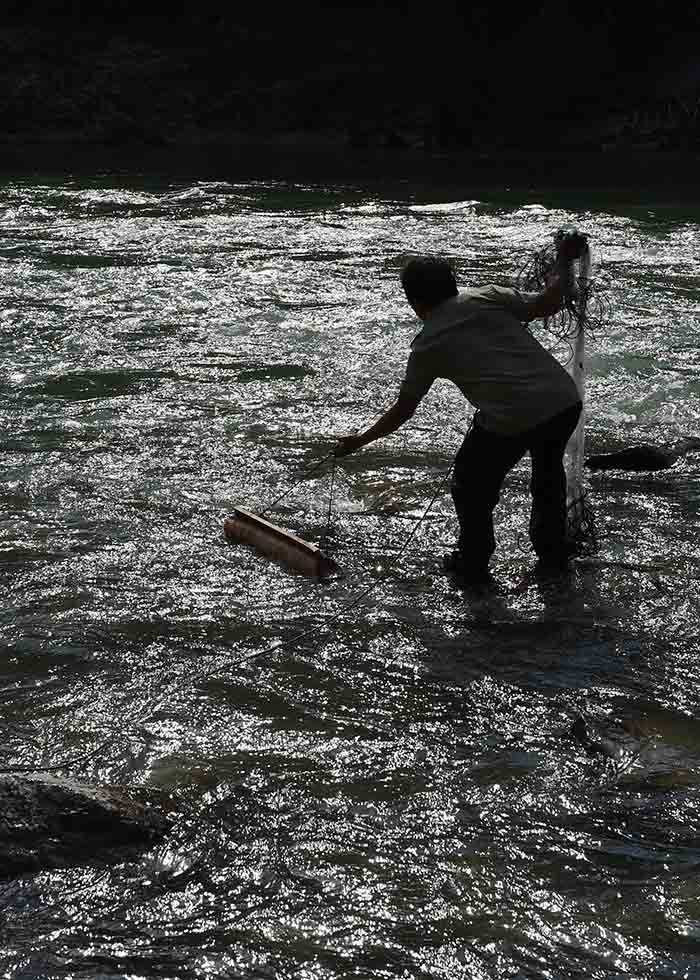
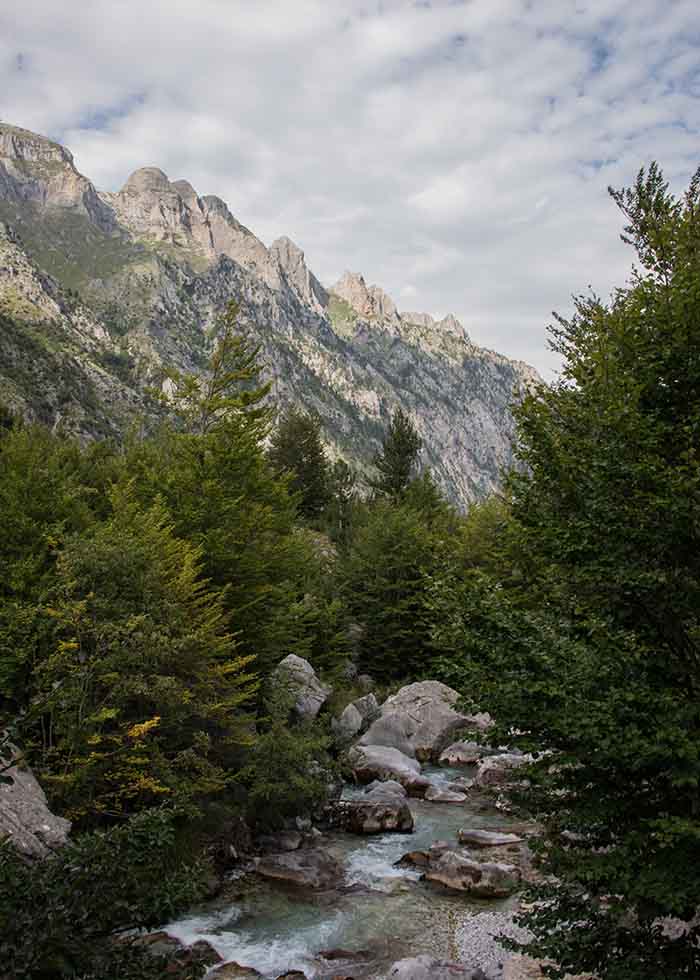
Given such dire statistics, there’s been growing enthusiasm for smaller hydropower projects. So-called “run-of-the-river” projects divert the river’s flow through a turbine without creating a reservoir, and are thought to have less impact on the environment because they don’t stop a river altogether. But the name can be misleading; they still divert water, and many also still store water behind impoundments. “Smaller hydro [projects] or run-of-the-river hydro is not immune to significant social and environmental consequences for the river,” Horner says.
Although many countries, including China, India, and Brazil, have passed policies promoting small hydropower projects in the belief that they’re more environmentally friendly, researchers at Oregon State University recently calculated the scaled impact of dams on the Nu River in China, and found that, by certain measures, small hydropower actually had a greater impact per megawatt. “One of the things we have been pushing for, which is important for both small and large hydro, is the need to not assess impacts project by project, but cumulatively,” Horner says. “If you have a cascade of small hydro, it might have the same impact as one large installation.”
That’s to say nothing of the damage a single dam in the wrong place can do. In northern Albania, the Valbona River spills from the Accursed Mountains, where steep white limestone formations cradle a sprawling floodplain. Every spring, floods set the stones of the river singing as boulders rush down the mountains. Then the waters slow. In a few weeks, the river’s mouth dwindles into a trickle you could practically step over.
In December 2015, Catherine Bohne, a resident of the valley, requested information about a small hydropower plant planned on the Valbona River. As it was the holiday season, she hadn’t gotten around to looking through the documents when a man from the local government arrived at her door with a huge map showing plans for four larger plants. Confused, she opened the envelope she’d received and realized she had requested information about the wrong hydropower project by accident. Further digging revealed plans for an additional nine plants, bringing the total to 14. It turns out that the government had granted multiple hydropower concessions on the Valbona River, allegedly without the required public notifications. For its part, one of the companies, Dragobia Energy, claims it followed appropriate procedures; a local non-profit, EcoAlbania, says the company signed names of people who had died to falsify records of public meetings.
The Valbona projects highlight the thorny legal issues involved in granting approval for such plans, and the vast difference between standards on paper and what happens on the ground. Dragobia Energy submitted an environmental impact assessment during their permitting process. Supposedly, the environmental protections mandated by the European Bern Convention, which Albania has signed onto, were upheld. In reality, though, eight of the hydro projects are within a nearby national park, which has been a protected area since 1996. The Dragobia Cascades project, which began construction in March, has already bulldozed the northern bank of the river, diverting water through a 10-foot wide delivery tunnel.
At a recent meeting of the Organization for Security and Cooperation in Europe, Emirjeta Adhami, a World Wildlife Fund representative, highlighted the gaps in the company’s assessment, explaining that it lacked even simple baseline data. She complained that it did not quantify impacts, and gave no thought to cumulative impacts or the effect of “significantly reduced river flows.”
Widespread corruption makes enforcing environmental protections difficult. According to a recent European Union report on the problem, nearly one in two Albanians admit to being demanded to directly or indirectly bribe public officials. But the problem extends far beyond Albania. “Decision-making on dams often underestimates the weakness of the wider governance context,” according to a recent study conducted by the Dutch Sustainability Unit. Josh Klemm, who focuses on the role of international financial institutions at International Rivers, puts it more bluntly. “There is no transparency,” he says. “It’s a huge issue.”

One proposed dam in Macedonia’s second oldest national park would threaten the habitat of the critically endangered Balkan lynx, of which there are fewer than 50.
Visual: mpiet/Wikimedia/CC
Further complicating the problem, the funding for dams often comes from large international organizations. According to a 2015 press release regarding a report from CEE Bankwatch Network, an independent finance watchdog group, “multilateral development banks are playing a key role” in the construction of dams in the Balkans. In addition to the World Bank, the release says, “The European Bank of Reconstruction and Development (EBRD) is the biggest investor in hydropower in the Balkans.”
Pippa Gallop, research coordinator at Bankwatch, says, “What’s particularly scandalous is that public banks like EBRD and the World Bank can and do finance smaller hydropower via commercial banks.” In the process, she explains, who is responsible for what gets confused, and that minimizes accountability. Local banks, contracted by multinationals, are “supposed to do their own due diligence,” Gallop says, but since the large banks aren’t required to disclose their local partners, no one — often not even the parent bank — checks in to see how well it’s done.
Bankwatch found that the EBRD supported 51 hydro projects, including 21 inside protected areas. Some of these are particularly fraught; one proposed dam in Mavrovo, Macedonia’s second oldest national park, would threaten the habitat of the critically endangered Balkan lynx, of which there are fewer than 50. “Our strategy for the energy sector is to try to meet a different energy mix,” says Francesco Corbo, Principal Banker of Power and Energy at EBRD. “One way is to invest in renewables, and one source of renewables is hydropower.”
Developing countries often get trapped in these complex financial arrangements. “Governments are required to provide guarantees to private investors,” Horner explains. “So they’re essentially taking on enormous risk.”
In the Democratic Republic of the Congo, for example, a massive dam proposed on the Congo River is already delayed, with huge cost overruns. “Countries have these massive concessional loan structures that [are] contingent on certain dam performance, and when rains don’t come,” Horner says, “countries have gone into debt crises.”
Researchers at Oxford University reported in 2014 that the majority of large dams don’t recoup the cost of their construction, let alone improve the local quality of life. As the economists James Robinson and Ragnar Torvik wrote in a 2005 study, “It is the very inefficiency of such projects that makes them politically appealing,” as it provides an opportunity for those in power to funnel money earmarked for projects into other hands.
If unexpected costs end up being borne locally, the benefits are sometimes far-flung. Bankwatch analyzed the electricity supply and demand patterns in the Western Balkans, and found that if all the proposed dams were built, the region would have a 56 percent electricity surplus by 2024. The profits from selling surplus electricity rarely get reinvested in local communities. In other words, the argument that hydropower is needed for development is sometimes misused.
In the DRC, Horner says, the vast majority of the delayed mega-dam’s future electricity is already allocated to South Africa. “If you’re thinking South Africa is really far away from the DRC, you’re right,” she says. “They still have to build transmission lines. People like to say it’s a clean energy resource lifting people out of poverty, but that’s not what’s happening.”
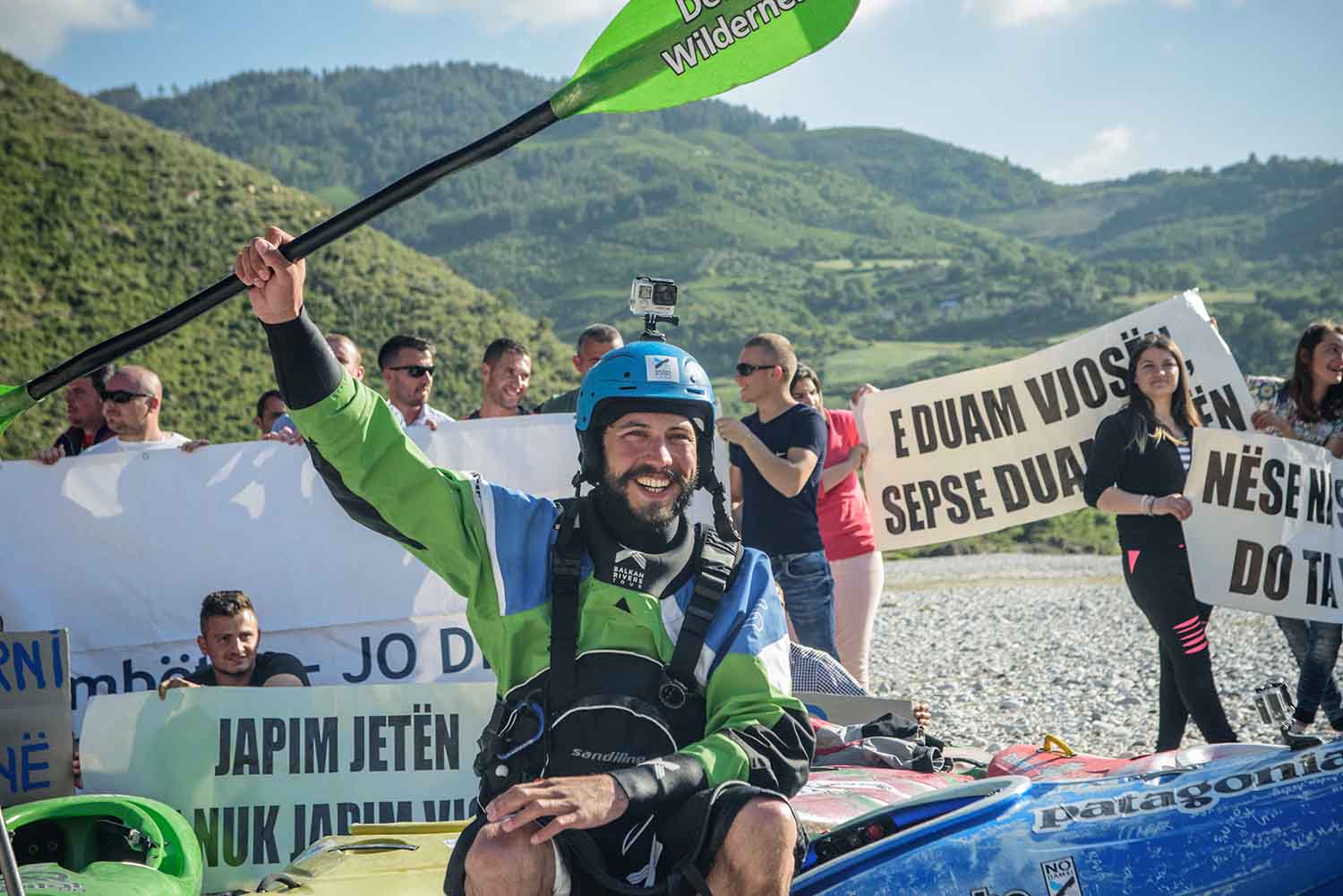

Back in Kuta, Hazizaj and the other villagers waited nervously this spring while a lawsuit against the proposed dam worked its way through the Albanian courts. Just as with the Valbona projects, “the public consultation was fake,” says Besjana Guri of EcoAlbania, which filed the complaint along with two other conservation organizations and dozens of residents. “The company produced an EIA that we said was a farce.”
Expectations for the country’s first environmental lawsuit were low. But in May, the judges announced that construction would have to be halted. Guri was thrilled, if surprised. “Winning against the state is not something that happens in Albania!” she says, adding that she received more congratulations on the outcome of the lawsuit than she did when she got married.
Sarah Chayes, an expert on corruption and a senior fellow at the Carnegie Endowment for International Peace, explains why results like this are so rare. “In these countries, the political economy is captured by an integrated network of kleptocracy,” she says, whose “objective is to capture revenue streams.”
Two common targets are high-end construction and infrastructure projects, which align perfectly with hydropower projects. Because the corruption often goes right to the top, it’s difficult to prevent. Often, Chayes says, “the whole project isn’t designed to serve the stated purpose” — like the proposed dams in Valbona, whose profit-loss projections defy logic. “The primary objective is to serve as a conduit for skimming money out of the government budget,” she says.
Chayes argues that international banks and nonprofits need to change their approach to funding such projects. For one thing, hydropower “shouldn’t be considered renewable, with all the implications of ‘renewable’ and what it means in today’s world in terms of positive branding,” she says, to say nothing of international financing or carbon credits.
In the end, she says, you can’t get to better governance through higher GDP. “We’ve been saying if these countries have higher GDP, they’ll demand better governance, but it’s getting captured by kleptocratic networks, so it’s not working.”
The solution, she maintains, is working with local communities on every step of energy projects. “It can be time consuming and messy, she says, but it “has really positive downstream effects.” In helping people hold their governments accountable, Chayes says, “lies development and prosperity.”
Statistics, predictably, can be marshaled to support each side of the argument for hydropower. Depending on your source, Albania currently imports between 13 and 78 percent of its energy — an enormous gap that reflects opposing agendas. But beyond the numbers, there’s an unavoidable trade-off between the benefits dams bring, and the harm they cause.
The lure of hydropower has long been the idea that there’s a way to generate energy without negative impacts. But in the end, the truth follows a basic law of physics: For every action, there is an equal and opposite reaction.
In the meantime, one proposed dam on the Vjosa has halted, but construction in Valbona proceeds.
Lois Parshley is a journalist and photographer, and currently a Knight-Wallace Fellow. She writes for a variety of publications, including Businessweek, National Geographic, Popular Science, and The Atlantic, among other outlets.


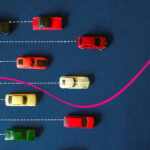



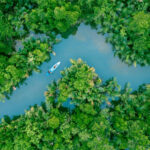



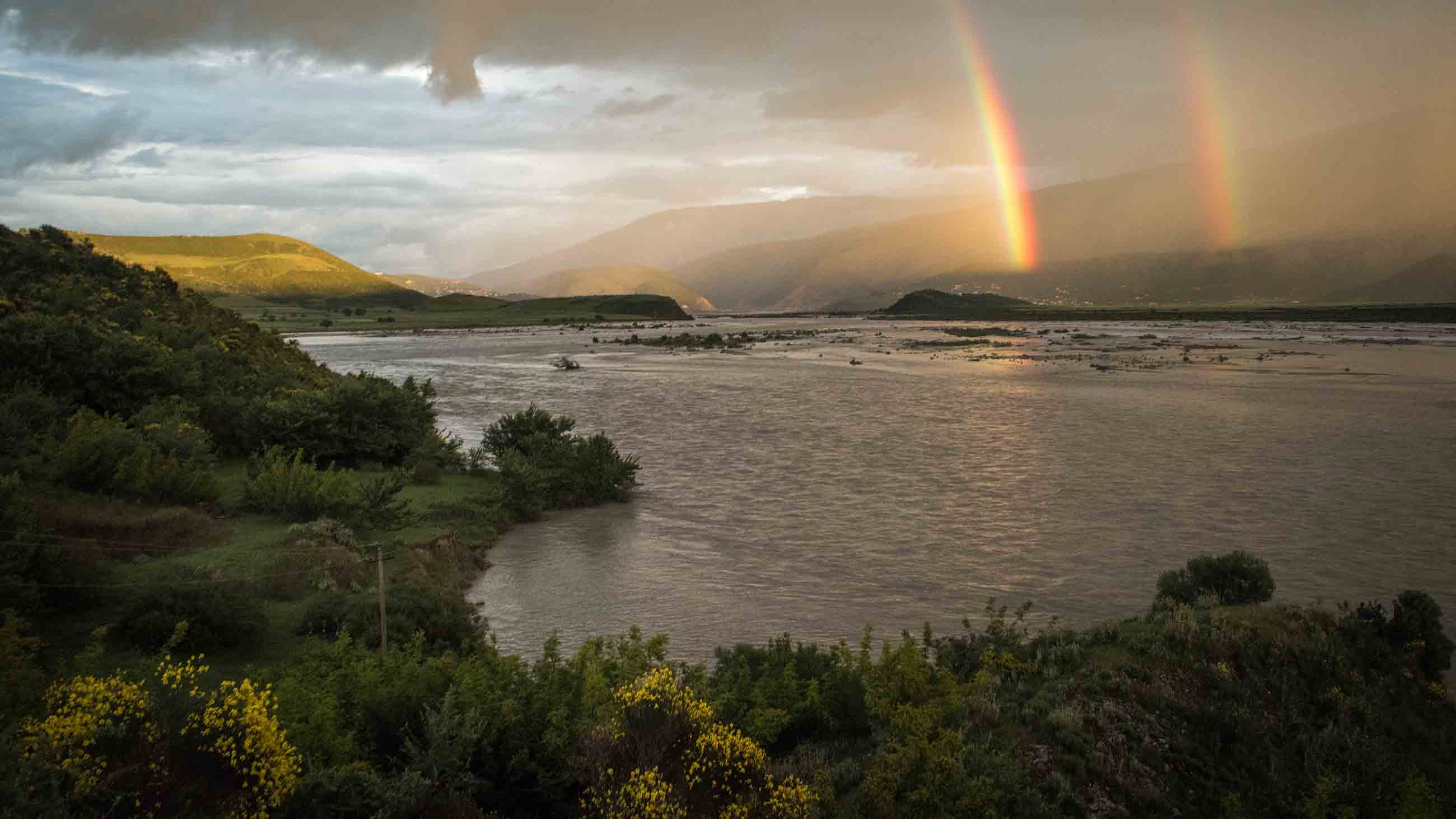
Comments are automatically closed one year after article publication. Archived comments are below.
Good article. Hydro needs to be analyzed carefully on a site by site basis. Tropical dams are big methane producers. In general, dams should only be build for water resources, not energy, But if you build them for water, use the electricity too. Some mountainous regions like Iceland allot hydro without comprising and major ecosystems.
There is an obviously but overlooked energy alternative: hydrocarbons extracted from our wastes. 20-40% of our energy can come from our wastes and it’s cleaner an cheaper than dumping, and carbon negative if biochar is used.
Solar and wind are the cheapest energy available on the planet, and can provide 60-99% of the energy demand (not just electricity). Appropriate hydro is a good backup but waste to fuels is universal. Human create wastes.
Great read! Really well written and link supported article about a topic that demands exposure like this. I would like to thank you for researching this subject which is causing devastation in Balkans’ ecosystems and some of last remaining pistil natural habitats in Europe, with in some cases little researched but obvious biodiversity. In past couple of years in Serbia we’ve had a tremendous number of projects for mini hydro power plant (MHPP) construction, some also within protected areas. In most cases they are run-of-the-river type cascades, so the result is that entire rivers or streams go through pipes nearly most of its length. The fish passes are built but aren’t being used, with even cameras in place so they can divert water onto passes if the inspection came. I also think that the bank loans are the key for this MHPP boom in the Balkans, so EU lobbying with the banks to stop them from giving loans through commercial banks for such projects would be necessary to stop this increasing trend of nature destruction.
On methane. Vegetation can easily be removed before the valley is flooded.Lumber can be sold, topsoil can be transported to less fertile areas nearby.Fish ladders can be installed to allow migratory fish safe passage.Fish counters can also be installed and a breeding program initiated to complement wild populations. Fish friendly turbines that are more efficient can be installed. Large pools in the lake behind the dam can have O2 added.In short, it’s about accentuating the positives and eliminating the negatives.
Great and well researched article! However, I still think for sub Saharan Africa, hydro remains the best option! Oil and coal are dirtier or unavailable! Wind and solar are too expensive! You say their costs are falling, but by how much? When will they fall low enough to beat hydro? I also think the article exaggerates the impact of dams! Most dams are built just upstream of falls and rapids! There was a natural barrier in the river anyway! As someone else has said, the methane would equally have washed downstream and form in the sea! And if carefully studied, those impacts are easier to mitigate than the impacts from current commercially viable alternatives!
Having just driven through Albania in winter, from Greece, seeing the destructive force of the river and destruction of the arable flood- plain land, threat to communications and life itself, I hope the issue is resolved. Too much talk serves only to extend the misery of Europe’s only third-world country
Yes, hydro impoundments probably release more methane than previously thought. But how much of the source organic matter would have ended up further downstream in the river sedimentary system, or in the ocean, and proceeded to be methanogenic there anyway? To the extent that organic carbon is being added to the system by the impoundment, this could be ameliorated by removal of the vegetation (i.e. logging, producing a revenue stream) beforehand.
And to say hydro should not be classified as renewable is just absurd overreach. You could just as easily say wind turbines are not renewable because they have lifetime of 20-odd years. It just goes to show how the word ‘renewable’ is becoming so debased as to be little more than a meaningless brand name.
Thank you so much for this revealing article. In a few years, hydropower, one of the most environmentally destructive forms of energy production, will be an anachronism. When fuel cells and fusion become realities, the damage of these massive projects will remain. Like the U.S., where multinationals like Brookfield push for production tax and investment tax credits by redefining these projects as “renewables”, governments subsidize these destructive projects. Projects on small tributaries that would not be viable economically leave lasting damage to riverine environements.
Bah. This just adds to the confusion of comparing mountains of empirical fact, each opposing mountain with a few sob stories thrown atop like decorative strawberries. Here’s the deal: energy production encourages itself. Like the way the Long Island Expressway, indeed the entire Eisenhower Interstate system encouraged cars. More energy calls for more energy. Exponentially. You want to stop people destroying the planet? Stop them from breeding. Call up your friends with their oh-so-cool kayaks on your shiny new cell and tell them to stop breeding.
Appears to me that the only sane person on the planet was Ted Kaczynski – expect for that business with the bombs, of course.
Article was interesting & sad since, I did not know about the methane problem that went along with hydro power & about some of the other negatives…… I do know hydro has ruined fishing & eco systems in many places in the USA….. Many places have lost their salmon runs. A whole industry lost…. We now have far too many Dams in the USA … A good documentary on Netflix is “DAM NATION”. Their must be a better trade off…….
“My Story as Told by Water…”, by David James Duncan is a book that touched my heart and made me sad. I hadn’t realized how detrimental dams are to the ecology of rivers and how much of the Pacific Northwest’s salmon runs have been absolutely destroyed by dams.